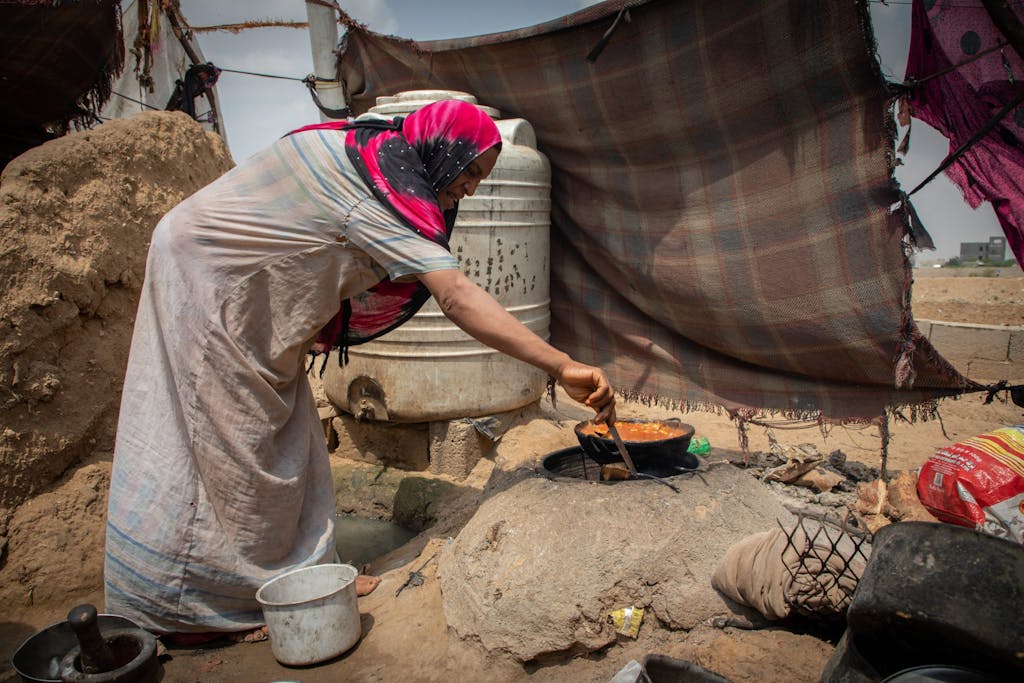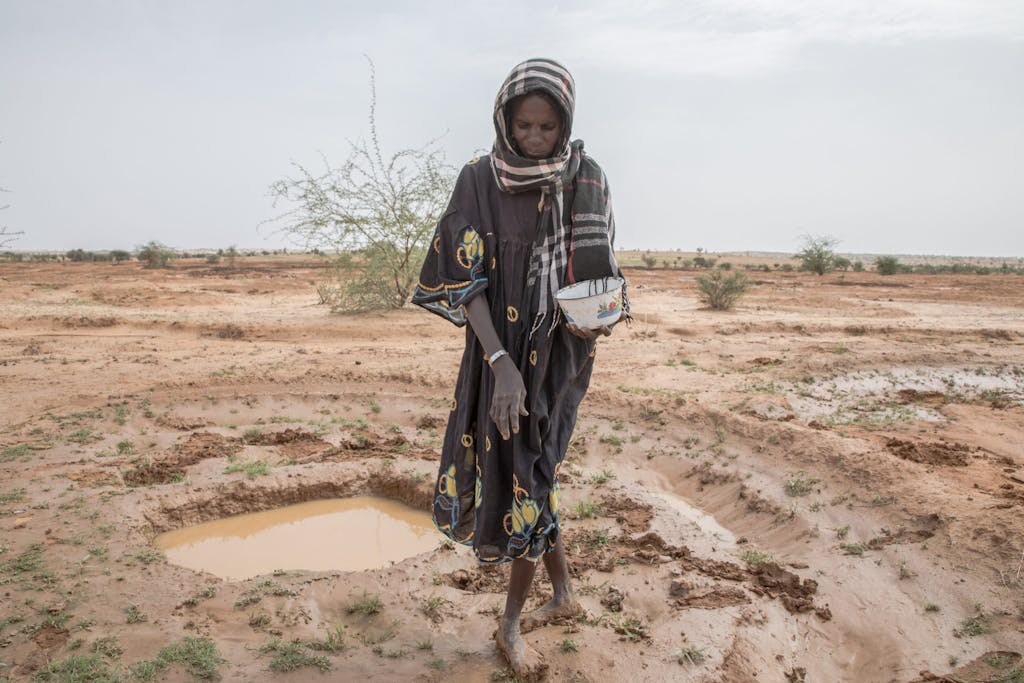As we all experience the devastating effects from the COVID-19 pandemic, an additional mounting threat is raging across much of the developing world: acute food insecurity and the risk of a possible hunger pandemic.
In a world where there are 135 million people suffering from acute hunger according to the latest Global Report on Food Crises, a further 130 million people could be driven into crisis levels of hunger in 2020 if the situation continues to deteriorate. This tremendous projected rise in the most severe forms of food insecurity is attributable to the triple threat of conflict, climate, and the devastating economic impacts from COVID-19.

Even before COVID-19 reared its head, the rise in global food insecurity was already alarming. While poverty has been on a downward trajectory, climate-related impacts on food systems and crop production have been building. Conflict and insecurity, which can be triggered and impacted by hunger and climate disasters, are also increasing.
Indeed, acute hunger has increased nearly 70% in the last several years including in conflict contexts. Nowhere is the situation as stark as in South Sudan, where two thirds of the population were in crisis levels of hunger or worse in 2019 as the country suffered continued violence.
Meanwhile, the number of extreme weather-related disasters has doubled since the 1990s – an increase largely attributed to climate change, which is causing yields of major crops to drop and food prices to rise, with a disproportionate impact on the world’s poorest.
This year, an already precarious food situation in the Horn of Africa, one of the world’s poorest and driest regions, was made much worse when swarms of desert locusts – whose appearance is likely linked to a changing climate – flooded the area, decimating crops and livelihoods.

The COVID-19 crisis and related economic shocks will further affect the number of people facing acute food shortages. The intersecting health and economic impacts of COVID-19 in the developing world are likely to be felt most acutely in Africa and the Middle East and in communities at risk of instability. A global recession will lead to loss of tourism, trade, and remittances that the poorest rely on for income.
According to the World Bank, extreme poverty is expected to rise for the first time in over twenty years, with nearly half the world’s extreme poor located in places that are already plagued by conflict and suffering from extreme weather. And as the pandemic wears on, the global and local food supply chains will only further be strained.
For the past few years, the drumbeat has been growing around the need to aggressively address this mounting food crisis. Treating the symptoms will not be enough. As such, the United Nations Security Council passed a resolution two years ago recognizing the linkages between conflict and hunger.
Taking action on this is all the more urgent now. In the COVID era, World Food Programme Executive Director David Beasley recently sounded the alarm at a UN Security Council virtual session: “In my conversations with world leaders over the past many months, before the Coronavirus even became an issue, I was saying that 2020 would be facing the worst humanitarian crisis since World War II for a number of reasons… with COVID-19, I want to stress that we are not only facing a global health pandemic but also a global humanitarian catastrophe.” It is just this fear that has led the World Food Program to double the projected number of those most at risk.
What can we do to stave off this looming “hunger pandemic”?
First, all actors engaged in conflict should put down their arms and implement the Secretary-General’s call for a global ceasefire. We know that peace helps keep hunger at bay. While we have seen some good movement on this front, much more can be done.
Second, humanitarian goods must be allowed to flow to the most vulnerable communities. Access to these goods is critical to stave off hunger and to further the fight against the pandemic. It is also essential to keeping global and local food supply chains moving.
Third, the global community needs to continue to allocate targeted funding to support these most vulnerable populations. Wealthy countries must avoid the temptation to pull back on their international commitments to avoid a potentially devastating hunger crisis.
Fourth, we should increase the gathering and use of real-time data on hunger trends and changes in the situation, which can help health workers and humanitarians save more lives. WFP’s live global hunger map, which now also overlays COVID-19 outbreaks, and the Famine Early Warning Network are both providing important food security data from around the world, including how COVID-19 is exacerbating current insecurities. In addition, more can and should be done to integrate data on food systems into information being tracked on other social and economic concerns.
Fifth, there must be a strong focus on fighting global climate change and help make communities more resilient to changes. Food insecurity will only worsen, even after we have taken care of COVID-19, if we do little or nothing to mitigate and adapt to the impacts of climate change.
In order to prevent the worst-case scenario, greater international cooperation and attention is needed now. The world has an opportunity to reimagine and create future food systems that are more equitable, affordable, and sustainable for everyone. Governments and other critical actors should work together in the run-up to the UN Secretary-General’s Food Systems Summit next year with the lens of reinforcing the outcomes of equity, sustainability, and peace that can be derived from better food systems. Through enhanced global mobilization and coordination to make food systems more sustainable, accessible, and fair, we can both drastically cut the number of people struggling to eat today and prevent these dire projections from becoming reality.
donate today
Every donation makes a difference. Support WHO’s life-saving efforts to respond to the COVID-19 pandemic by giving to the COVID-19 Solidarity Response Fund. Donations made via Facebook will be matched up to $10,000,000. Through June 30, 2020, for every $1 you donate here, Google.org will donate $2, up to $5,000,000.




 View All Blog Posts
View All Blog Posts



